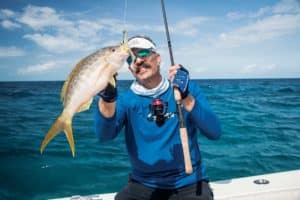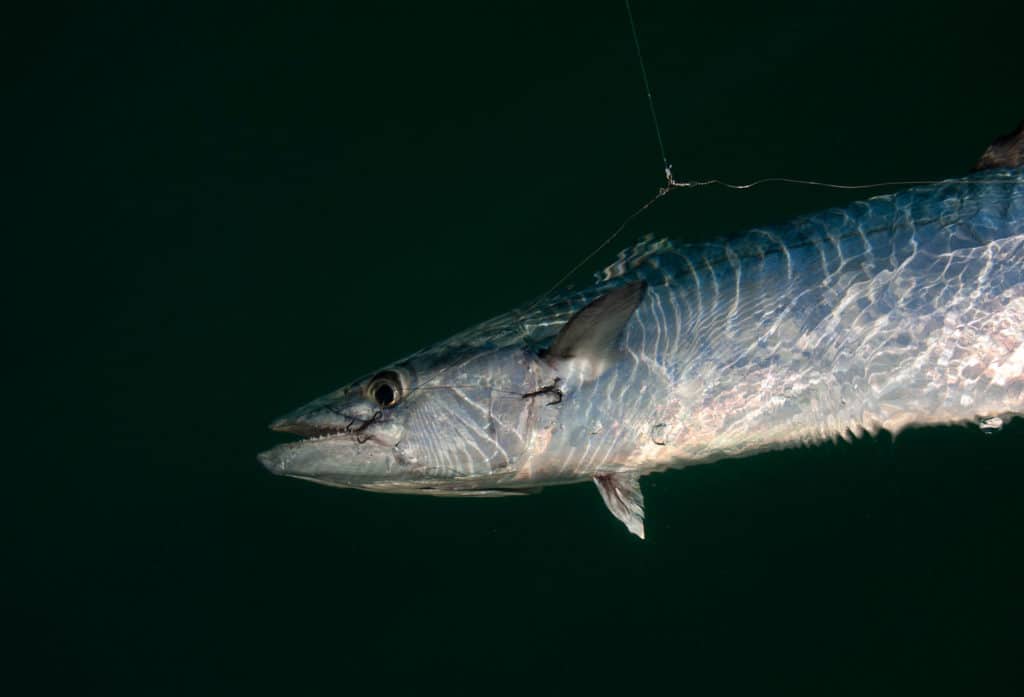
Anglers targeting big kingfish and Spanish mackerel by slow-trolling live baits use specialized techniques to entice wary fish to strike. One popular and proven tactic involves presenting two live baits on a single terminal rig, which creates a larger profile and more action. These double-pogy rigs can be tied in two basic designs. And while the pogy, or menhaden, is commonly used, this system works well with a variety of other baitfish. Both rig designs use extra-strong hooks and swivels, and employ haywire twists to make connections between lengths of single-strand wire. Skirts or colored beads can be added for color and flash.
King Mackerel Double Pogy Rig
Here’s the list of the materials needed:
- American Fishing Wire pre-cut lengths of camo brown 58-pound-test (12-inch) and 38-pound-test (36-inch)
- VMC 4X strong treble hooks, black nickel, size 4
- Owner Flyliner live-bait hooks, black chrome, size 1/0
- Spro Power Swivel, (single barrel swivel), size 7
- Spro Power Swivel Combo (three-way swivel), size 5
- Skirts or colored beads if desired. I like chartreuse and mylar.
- DuBro E/Z Twist tool for making haywire twist
This rig is built like a single-bait, two-hook rig but you add a second treble hook. Easy to build and tougher to tangle, the three-hook rig can also be used with small Spanish mackerel, large blue runners, ladyfish or ribbonfish — if you run short of terminal rigs built specifically for those baits.
STEP 1: Haywire-twist a treble hook onto each end of a 12-inch section of 58-pound-test wire. Leave approximately 6 inches of wire between the hooks.
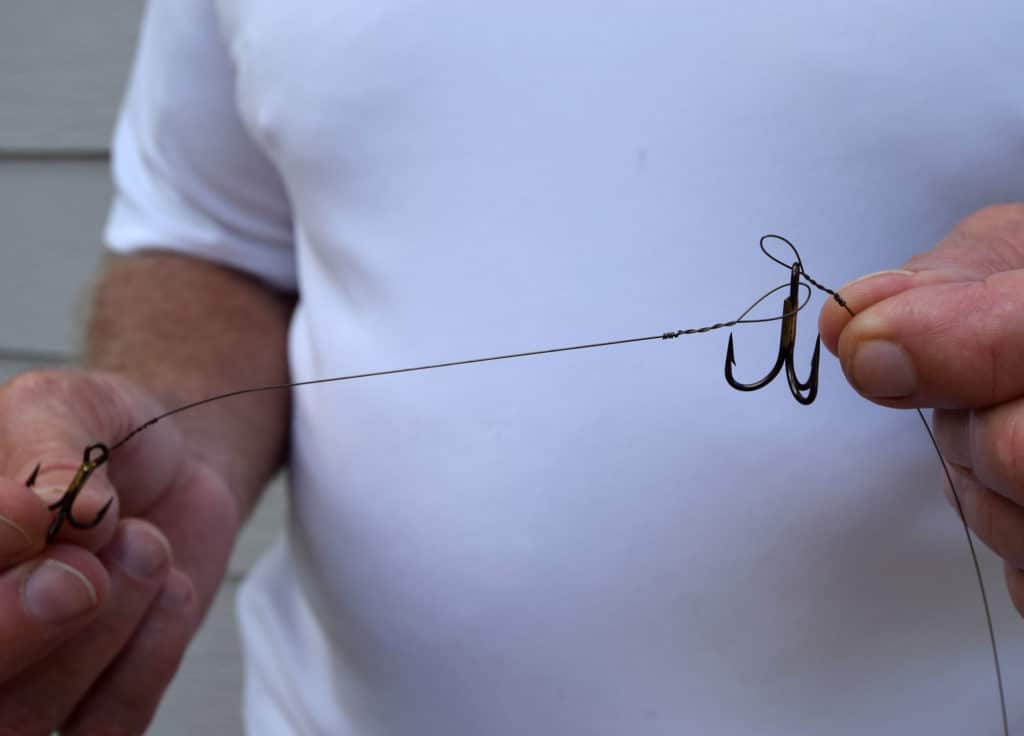
STEP 2: Connect another 12-inch length of 58-pound-test wire to the eye of one of those treble hooks and finish the opposite end of the wire with a live-bait hook — again leaving about 6 inches between the hooks.
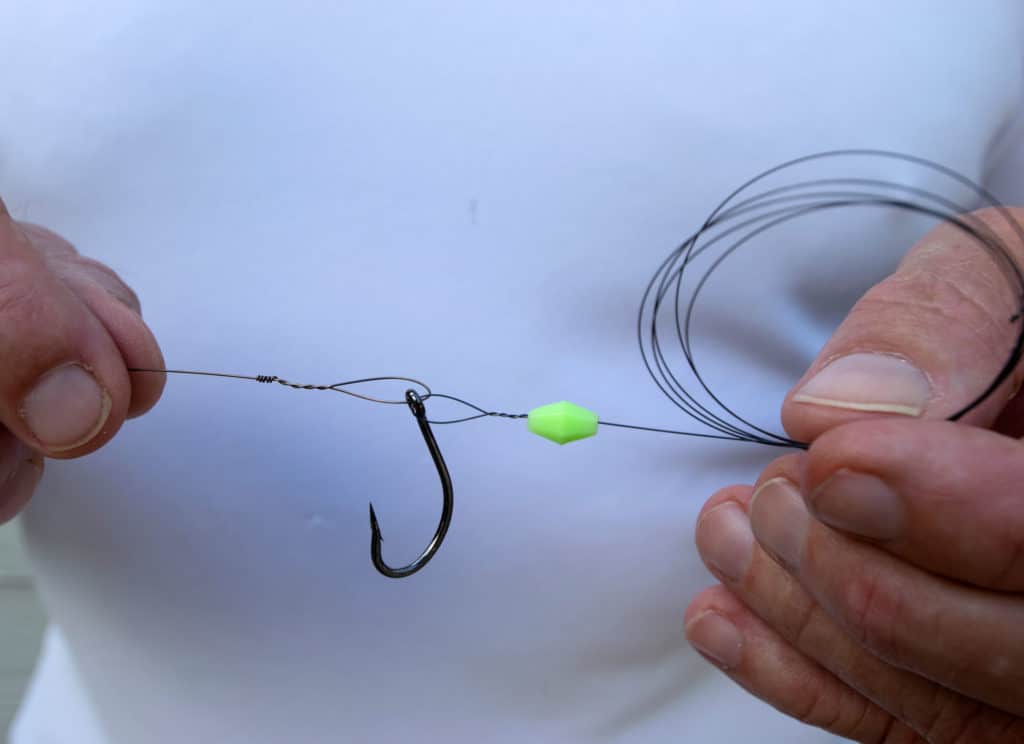
STEP 3: Haywire-twist one end of a 36-inch length of 38-pound-test wire to the live-bait hook and finish the opposite end with a single barrel swivel.
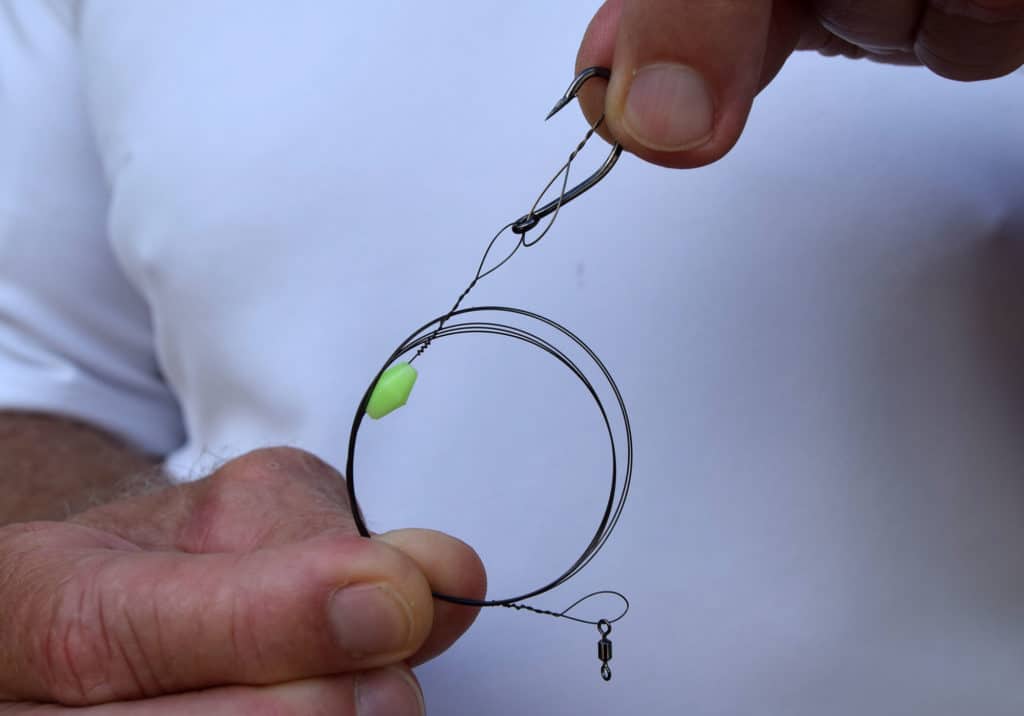
STEP 4: Below, a finished rig before adding live baits. But now it’s time to fish! Attach one bait to the live-bait hook by passing the point through the nostrils. Attach the second bait to the middle treble hook by passing a point of the treble through the nostrils. The last treble swings freely.
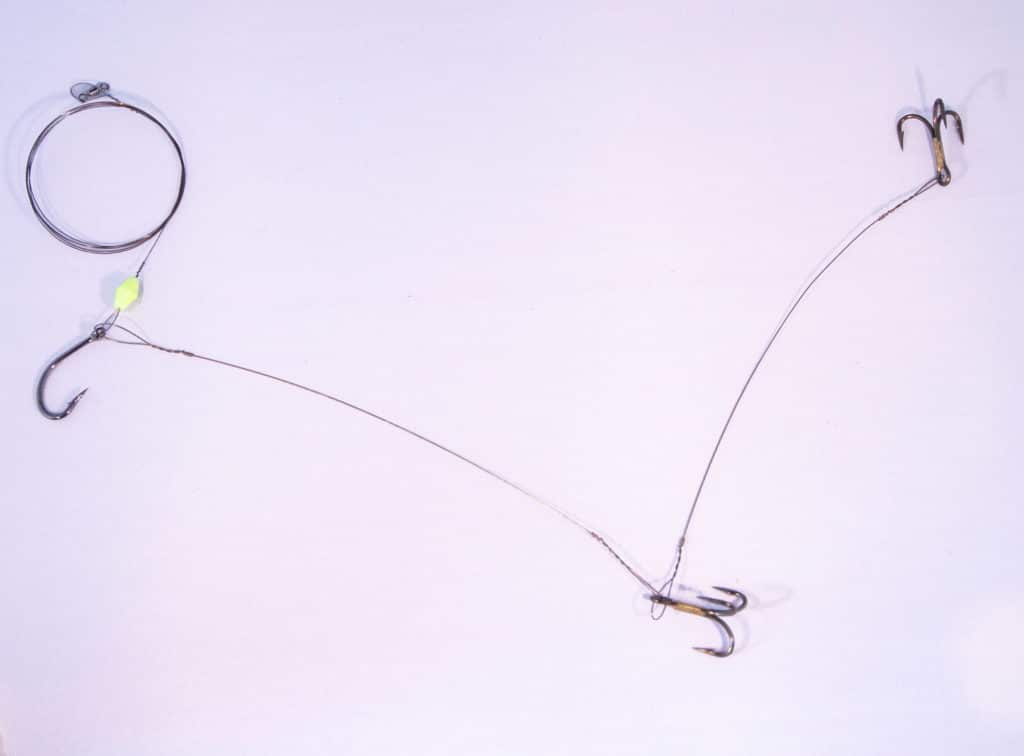
The Four-Hook Kingfish Rig
This rig is a combination of two single-bait rigs attached to the mainline with a three-way swivel. The four-hook rig allows each bait more freedom of movement, somewhat eliminating a tiring tug-of-war between baitfish, but it does so at an increased risk of tangling.
Haywire-twist a treble hook and a live-bait hook onto a 12-inch section of 58-pound-test wire, leaving approximately 6 inches between the hooks. Connect one end of a 36-inch length of 38-pound-test wire to the live-bait hook and the opposite end to one eye of a three-way swivel. Repeat this process with another treble and live-bait hook, but this time, remove 6 inches of the 36-inch length of wire before connecting it to the second eye of the three-way swivel.
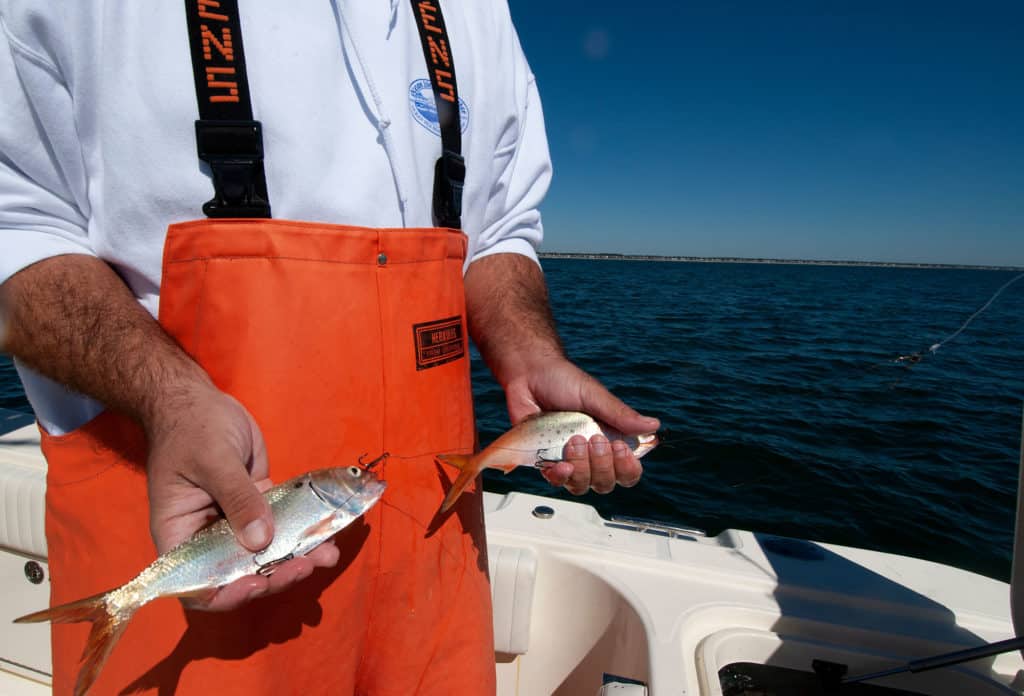
Attach baits to the two live-bait hooks by passing the points through their nostrils. Attach the trebles to the bait by passing one point through the skin just behind the dorsal fin. If the treble hooks swing freely, that increases the chances of tangling when the two baits swim together.
Although I always try to pick baits of equal size and friskiness, it’s common for one baitfish to tire before the other, rendering the rig less effective and making it necessary to change out baits more often. However, this extra effort pays off when a smoker king skyrockets behind your boat with your handmade double-pogy rig in its mouth.




